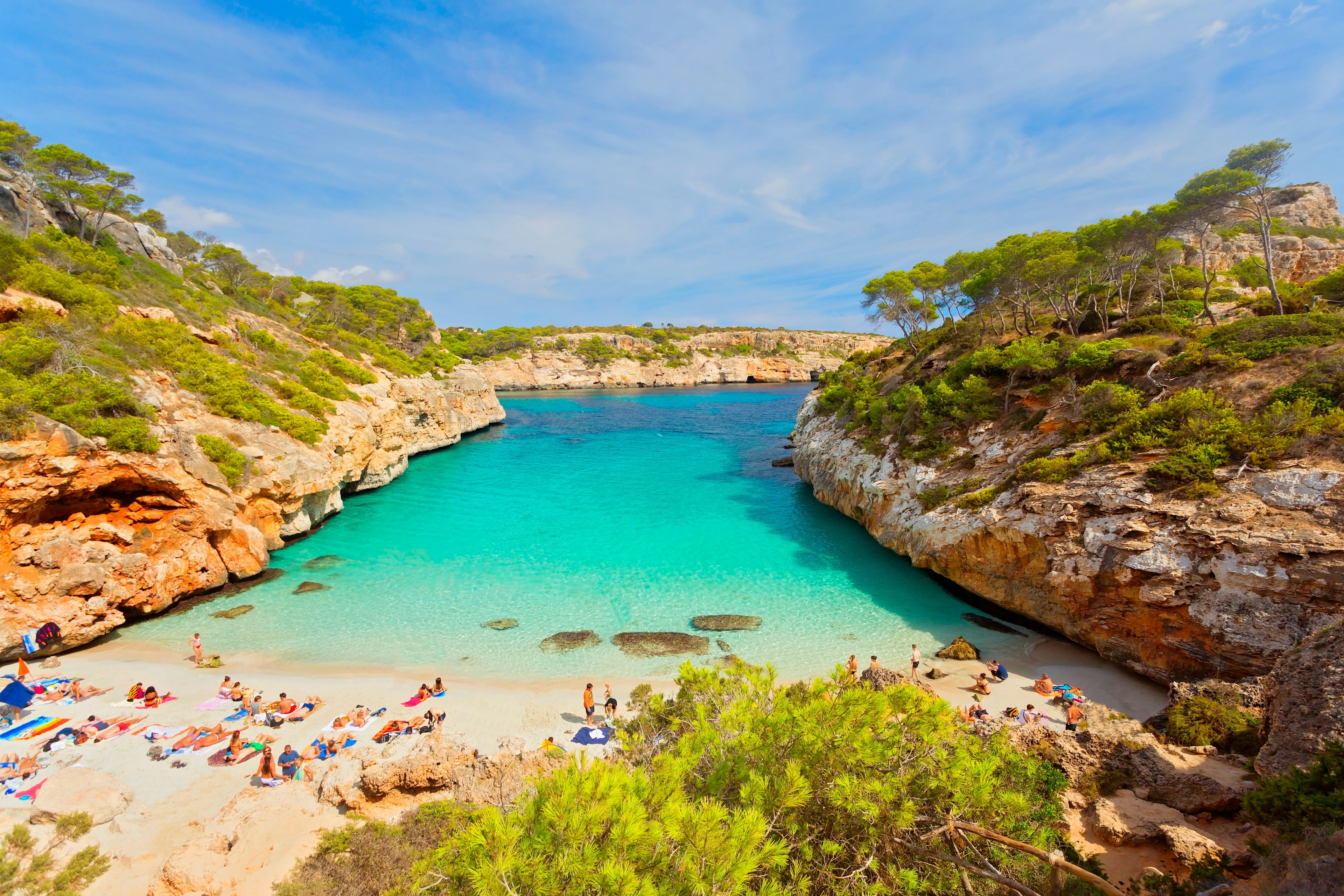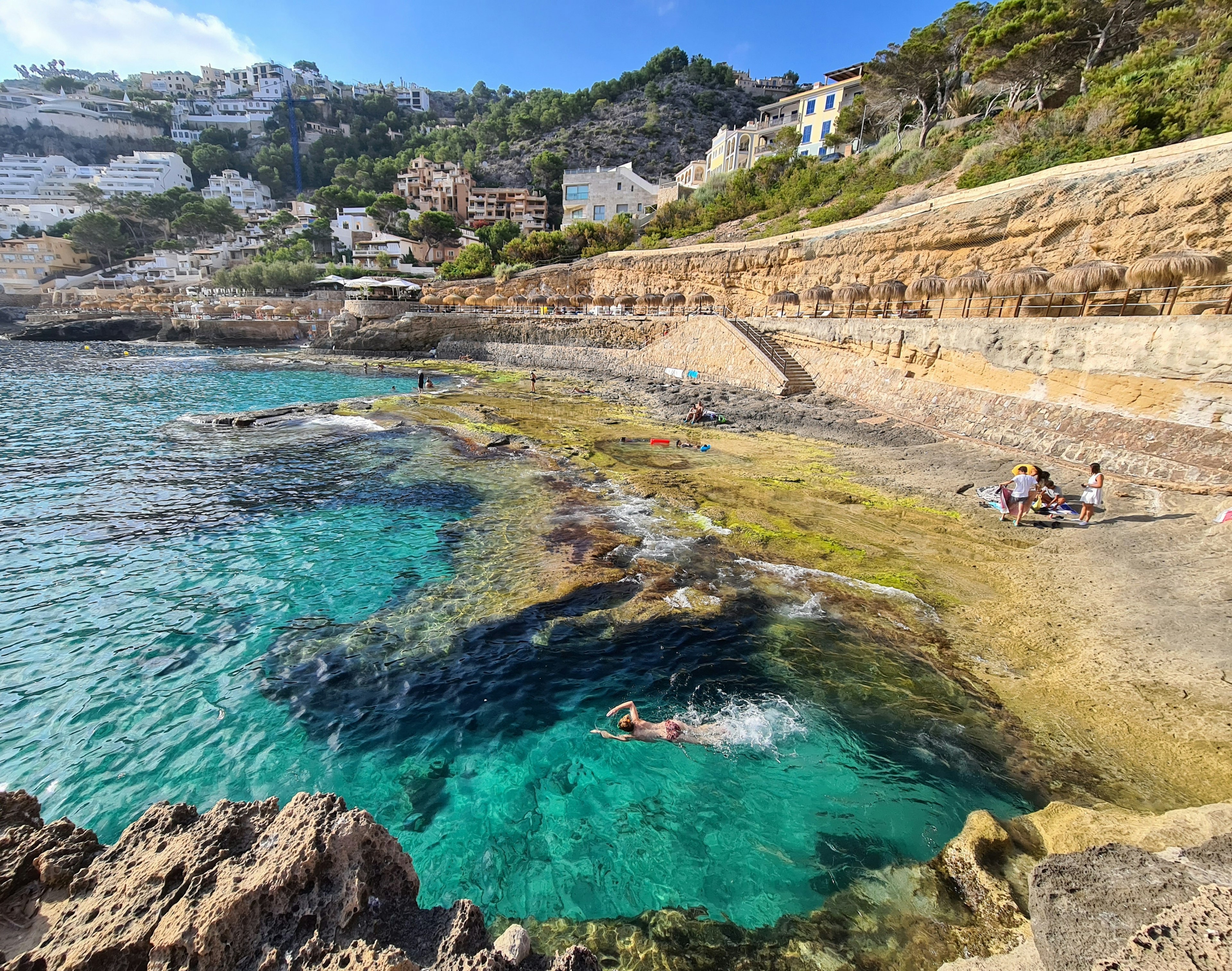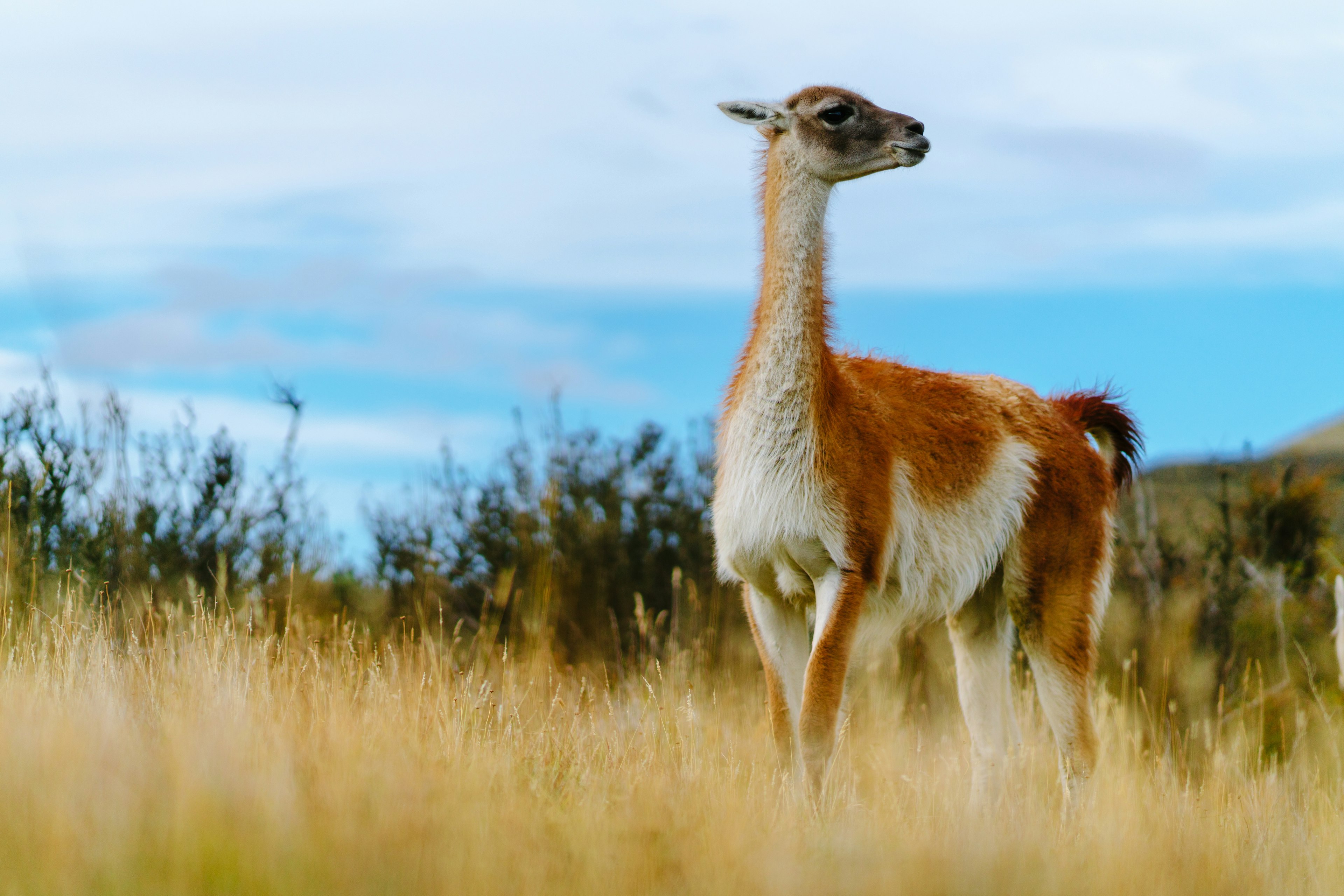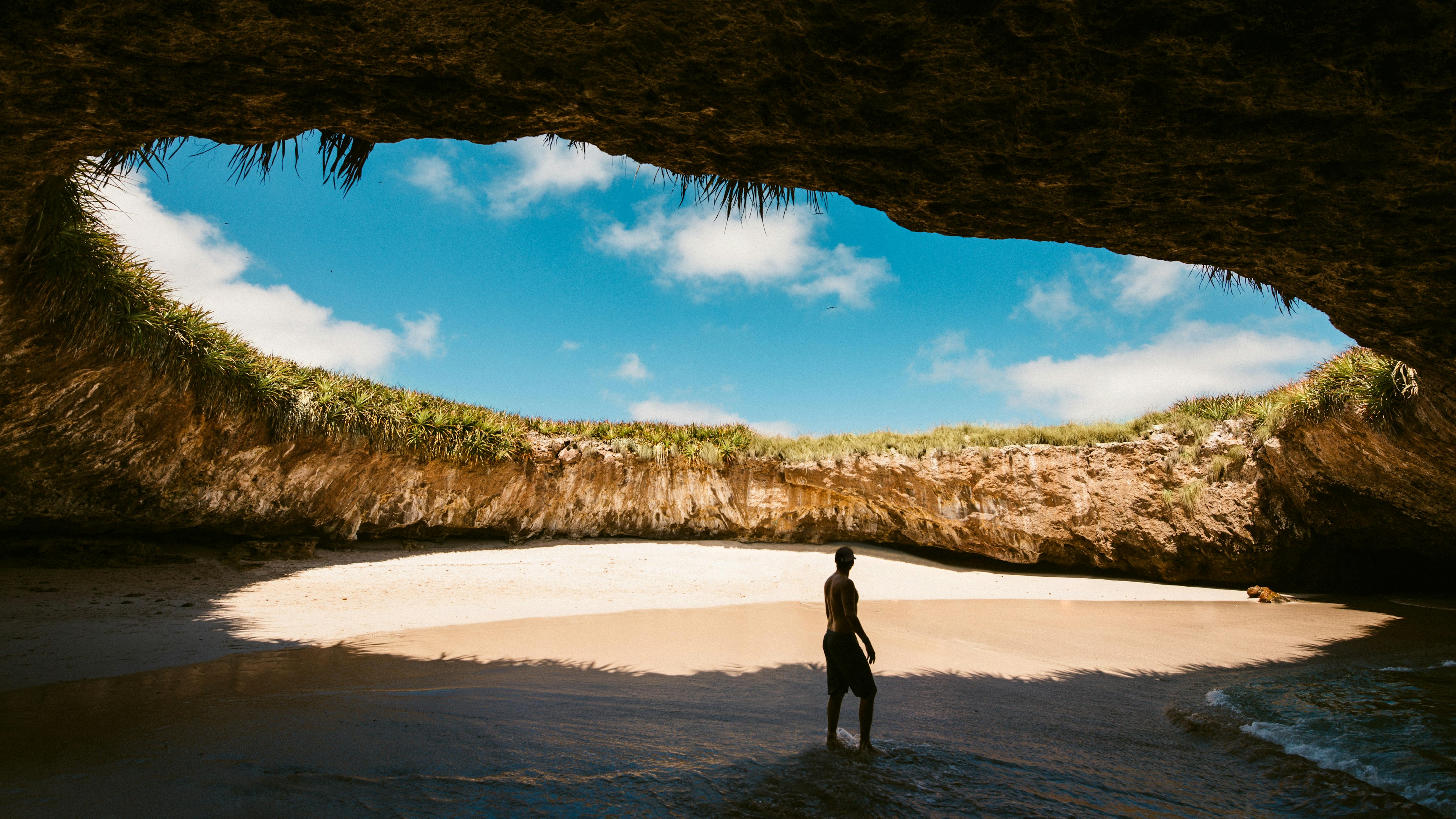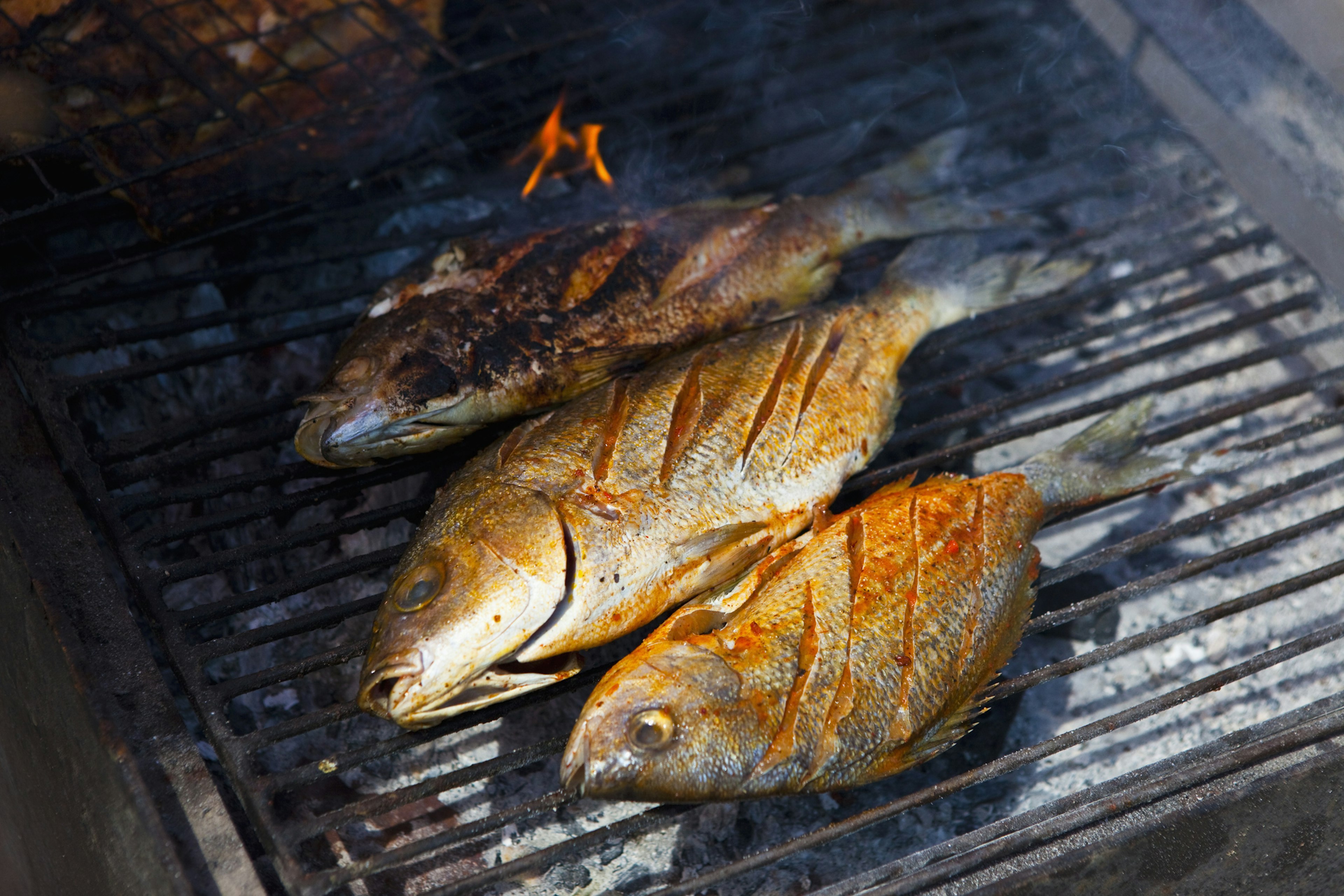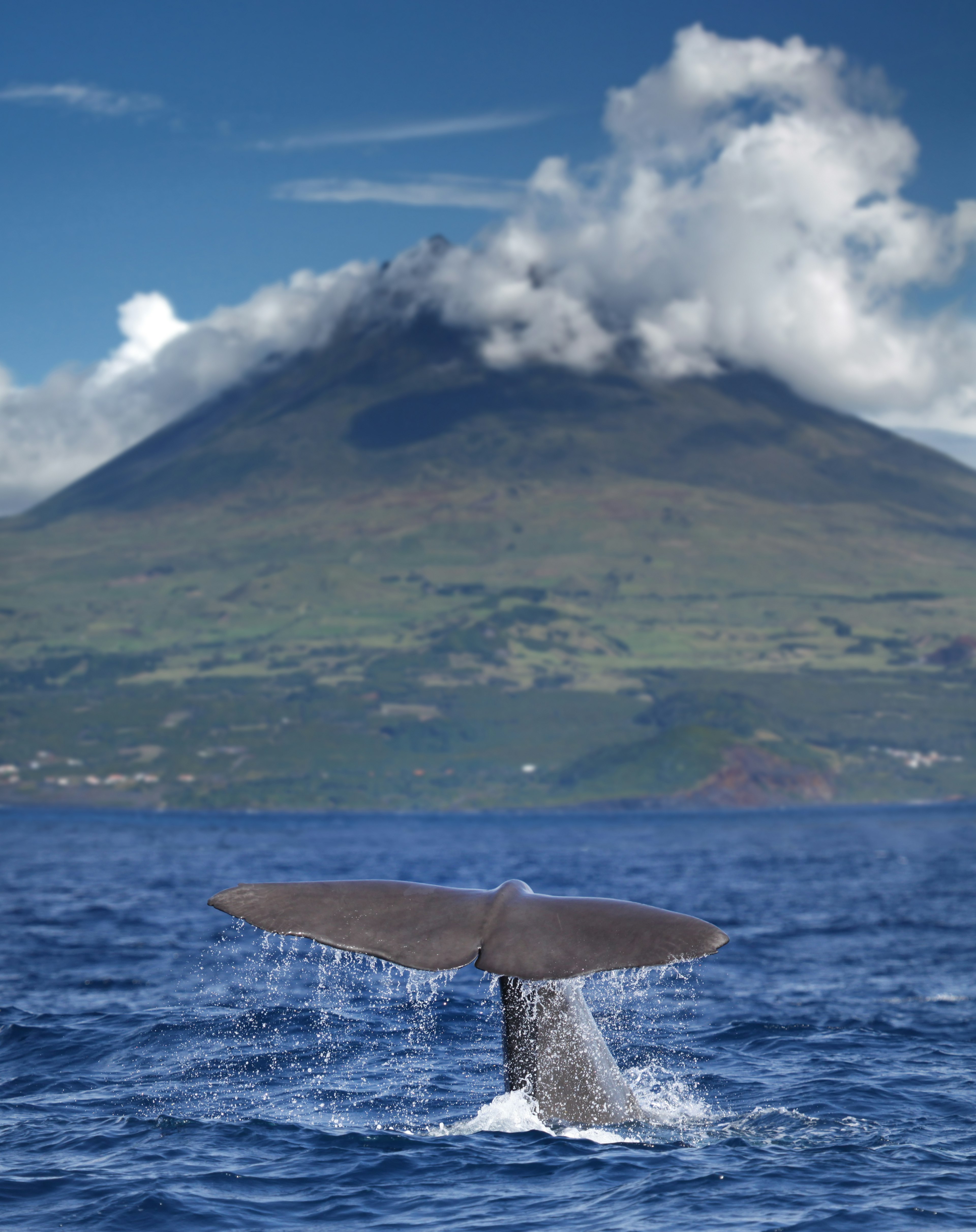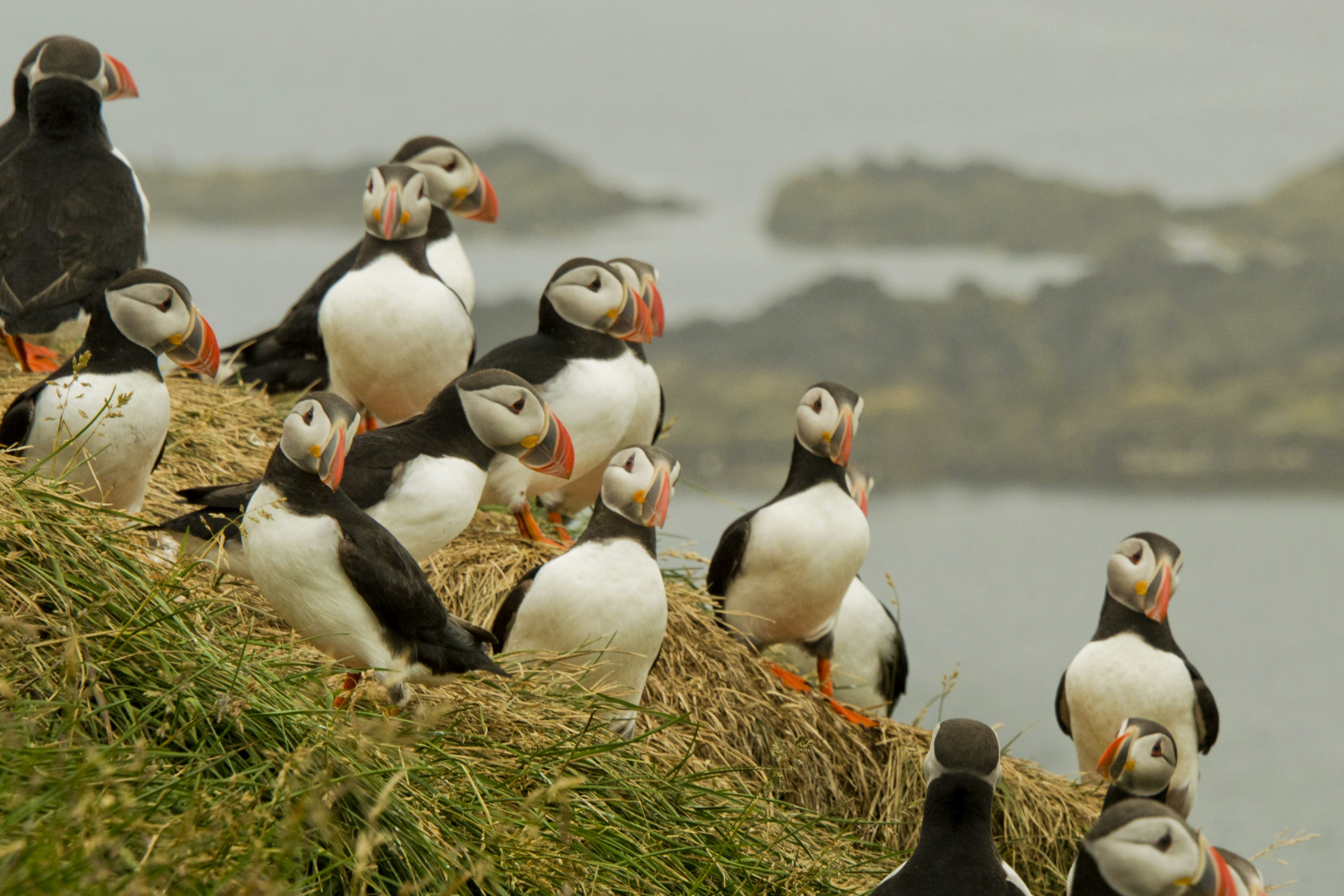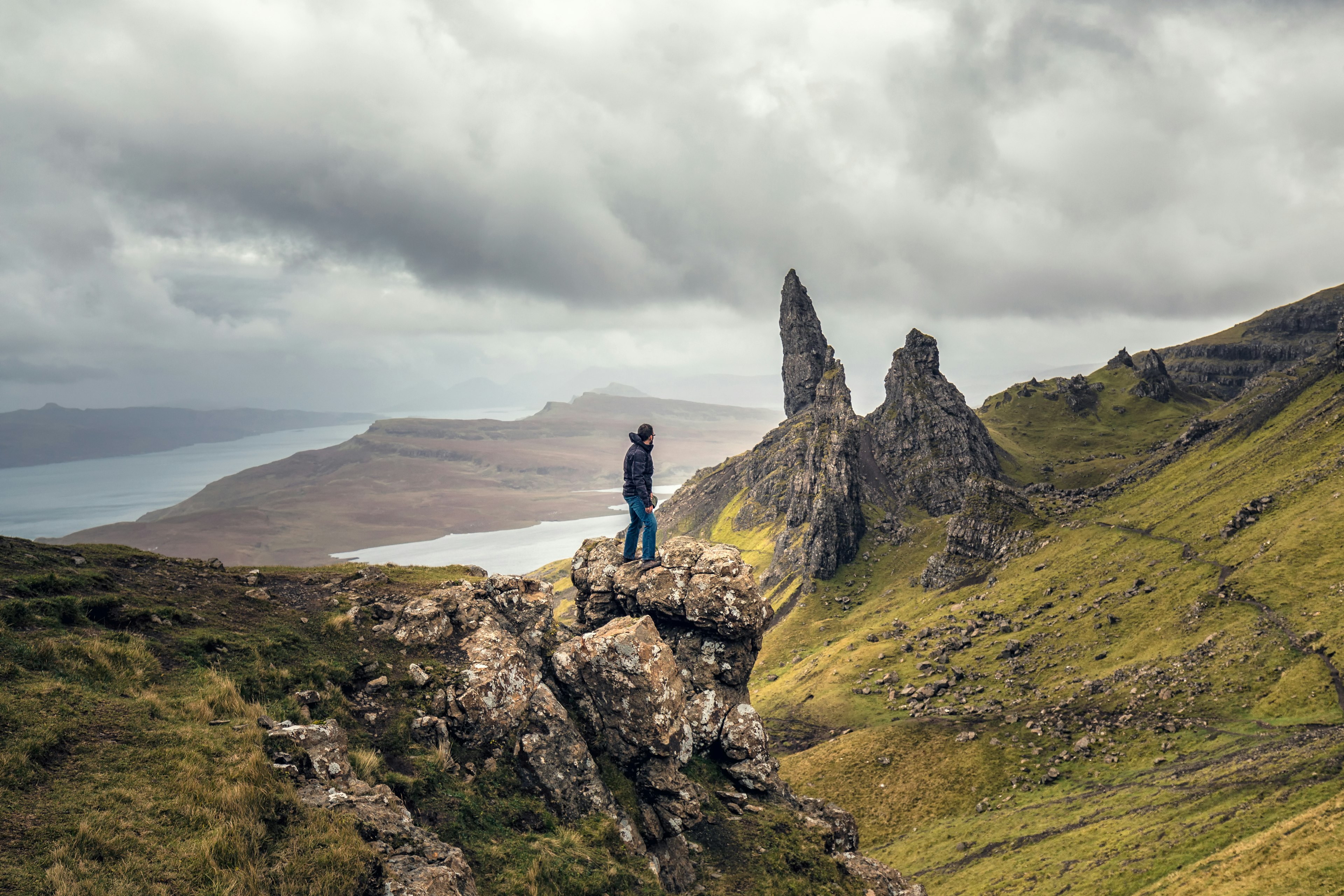India présente un kaléidoscope d’expériences, de cultures, de paysages, de cuisines et de religions.
Pensez-y, et il y a de grandes chances que l’Inde l’ait. Le pays adore ses surnoms et est fier de ses nombreux superlatifs. Un désert de sel. La plus grande île fluviale. Le plus grand parc flottant du monde. Un village qui disparaît pendant la mousson et réapparaît en été. Un parc avec des tigres blancs. Une ville de lacs. Ce ne sont que quelques-unes des expériences uniques à trouver dans ce pays.
En tant que voyageur, il est préférable de choisir une région ou un état et de consacrer du temps à l’explorer en profondeur. Il est impossible de se plonger dans l’incroyable diversité du pays dont la culture, la langue et le paysage changent tous les quelques kilomètres en un seul voyage. Cela pourrait nécessiter plusieurs vies.
Vous ne savez pas par où commencer ? Voici quelques faits marquants.

1. Agra, Uttar Pradesh
Meilleure ville pour les amoureux
Cette ville riche en histoire constitue souvent une partie du circuit touristique le plus prisé d’Inde : Le Triangle d’Or, reliant Delhi, Agra et Jaipur. Bien sûr, la principale raison de visiter Agra est de voir le Taj Mahal, l’une des Sept Merveilles du Monde moderne. Souvent considéré comme le plus grand monument de l’amour jamais construit, il fut érigé par l’empereur moghol Shah Jahan en tant que tombeau pour son épouse bien-aimée Mumtaz Mahal.
Le mausolée en marbre de couleur ivoire se trouve dans un complexe qui comprend également des jardins, deux mosquées et un musée. Un peu plus loin sur la rivière se trouve le spectaculaire Fort d’Agra, une vaste structure en grès rouge célèbre pour sa monumentale Porte de Delhi et ses palais et mosquées privés. En effet, la plupart des sites historiques d’Agra sont situés à proximité les uns des autres sur les rives de la Yamuna.
Il est préférable de voir le Taj à l’aube ou au crépuscule, et les plus belles vues sont de l’autre côté de la rivière, depuis le parc Mehtab Bagh. Agra est également célèbre pour son petha, une friandise sucrée à base de gourde blanche confite, souvent achetée comme souvenir.
Détour : À une heure de route se trouve un autre site historique étonnant, Fatehpur Sikri – une ville en ruine hantée et fantomatique qui fut autrefois la capitale de l’Empire moghol sous l’empereur Akbar.

2. Delhi
Idéal pour les passionnés d’histoire et d’architecture
La région historique de la capitale de l’Inde forme le sommet du Triangle d’Or. Delhi est une ville et un Territoire de l’Union, centrée sur l’Old Delhi – surnommée Shahjahanabad – et le New Delhi construit par les Britanniques, la capitale de l’Inde. Pourquoi visiter ? Eh bien, si vous marchez presque n’importe où dans l’Old Delhi ou le New Delhi, vous êtes susceptible de croiser un bâtiment historique, un monument ancien ou un tombeau, une mosquée ou un fort marqués par le temps.
En tête de liste des incontournables figurent les bâtiments de l’époque moghole et du sultanat de Delhi tels que le tombeau de Humayun, classé au patrimoine mondial de l’UNESCO à Nizamuddin, le Qutab Minar dans le sud de Delhi, la Jama Masjid et le Fort Rouge dans l’Old Delhi et l’observatoire Jantar Mantar dans le New Delhi. Accordez également du temps pour la Maison de culte Bahai des années 1980 (Temple du Lotus) et l’India Gate, au cœur du quartier administratif de Delhi.
Delhi est intense et chaotique mais toujours fascinante, et elle abrite l’une des cuisines les plus raffinées (et de la nourriture de rue) du pays. C’est aussi une ville qui gagne le gros lot en matière de divertissement – une visite des bars et cafés de Hauz Khas Village en soirée le prouvera. Et les marchés de Delhi – Karol Bagh, Janpath, Paharganj, Sarojini Nagar, Khan Market et Chandni Chowk – sont parfaits pour acheter des souvenirs et des vêtements abordables.
3. Darjeeling, Bengala Occidental
Ideal para té y trenes de juguete
La antigua capital de verano del Raj británico, la estación de montaña de Darjeeling, se encuentra en el regazo de los Himalayas. Kanchenjunga (Khangchendzonga), la tercera montaña más alta del planeta con sus 8586m (28,169ft), contempla con benevolencia esta localidad, con sus bosques de abeto plateado, sinuosas carreteras, exuberantes jardines de té y profundos valles.
Además de descubrir vestigios del colonialismo británico, puedes realizar una excursión de acampada al Parque Nacional Singalila, visitar el Instituto de Montañismo del Himalaya (donde Tenzing Norgay fue director en su día), subir a la Roca Tenzing, comprar y pasear por The Mall y degustar algunas de las mejores infusiones de India en alguna de las muchas plantaciones de té de la ciudad. Para una experiencia más espiritual, busca serenidad en la Pagoda de la Paz Japonesa, los monasterios budistas Ghum, Dali y Bhutia Busty, o el Templo Mahakal en la Colina del Observatorio (donde las deidades hindúes y budistas coexisten).
El orgullo de Darjeeling es el pequeño “tren de juguete” que recorre el Ferrocarril del Himalaya de Darjeeling. Este ferrocarril, catalogado como Patrimonio de la Humanidad por la UNESCO, desciende hacia New Jalpaiguri (NJP) para enlazar con trenes procedentes de Kolkata; sin embargo, la mayoría de los visitantes se enfocan en el corto trayecto en locomotora de vapor entre Darjeeling y Ghum.
Desvío: Para un cambio de escenario, hay más estaciones de montaña encantadoras alrededor de Darjeeling, como Kalimpong, Kurseong y Mirik, accesibles todas ellas en 4×4 compartido.
Las playas de Goa son un sueño, pero no pases por alto los lugares de interés tierra adentro. John Harper/Getty Images
4. Goa
Ideal para relajación
Uno de los estados más pequeños de India, Goa es un lugar vacacional preferido gracias al sol, arena, gastronomía y ambiente. A pesar de su tamaño reducido, el estado es culturalmente rico, con música, comida, danza y arquitectura únicas, influenciadas por más de cuatro siglos de dominio colonial portugués. Puedes vislumbrar este legado en las basílicas en ruinas de Vieja Goa, en las antiguas casas goanas como la Casa Figueiredo y el Palacio do Deão, y en conciertos de música mando y fado.
Goa posee una extensa línea costera arenosa, y actividades en sus playas son variadas, desde deportes acuáticos hasta yoga. Lejos de la arena, el interior revela aldeas tranquilas con costumbres y festivales locales interesantes. Goa también está creciendo como destino culinario, ofreciendo una muestra de muchas cocinas indias e internacionales y nuevas interpretaciones emocionantes de la gastronomía local.
Consejo local: Al elegir una playa en Goa, el norte ofrece fiestas y mercados nocturnos, cultura hippie, escuelas de surf, playas animadas y modernos cafés y bares. El sur de Goa es conocido por su belleza natural, playas tranquilas, santuarios de vida silvestre como Bhagwan Mahavir cerca de Molem y Netravali cerca de Palolem, y sitios prehistóricos como Usgalimal.

The most efficient manner to remain in touch.
Saily offers a stress-free approach to traveling data — simply select your data package and get ready for your journey. Upon reaching your destination, access the internet instantly.
Acquire your eSIM
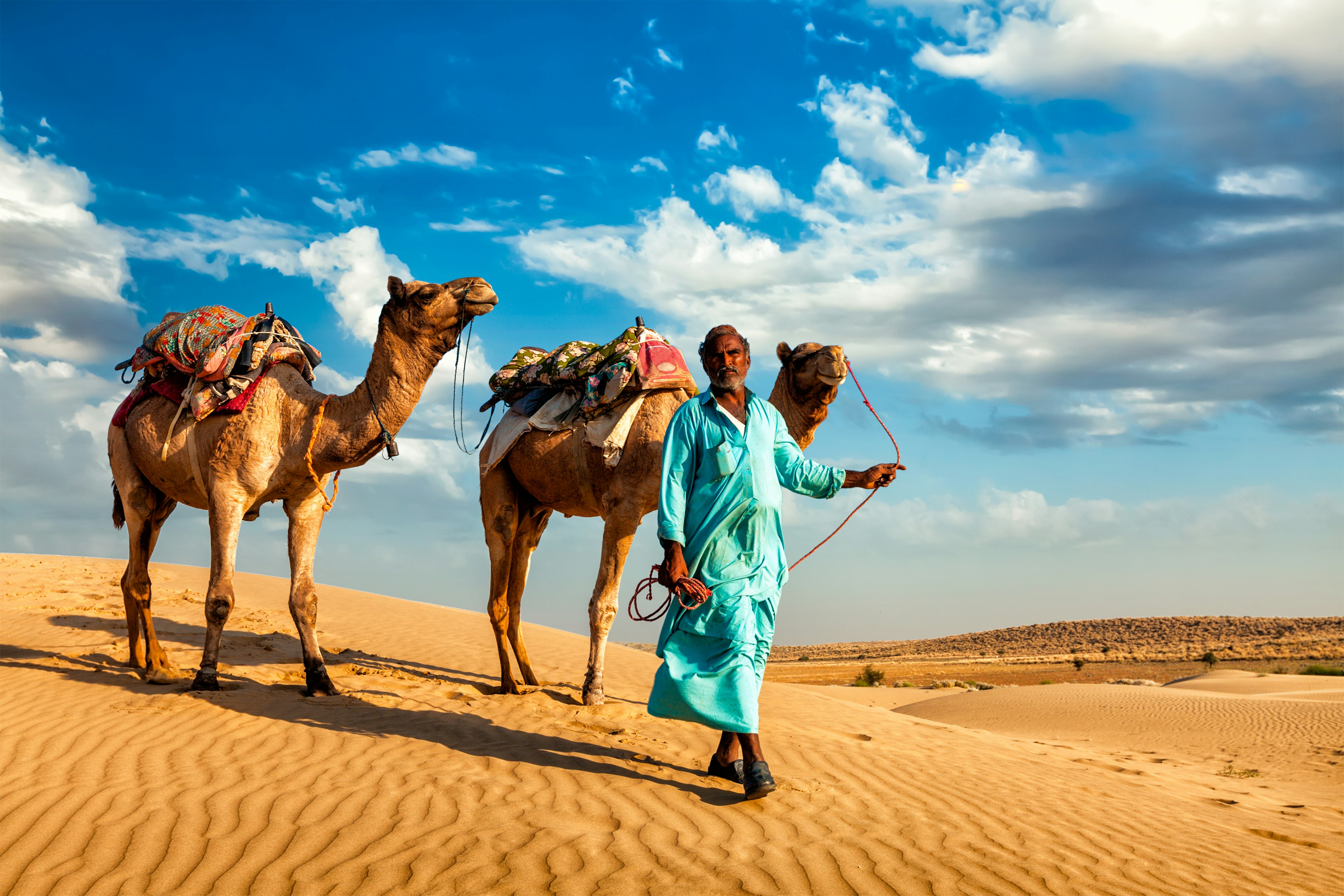
5. Jaisalmer, Rajasthan
Ideal para romance en el desierto
Jaisalmer es la ciudad dorada de la India, gracias al brillante color de sus ondulantes dunas de arena y edificios de arenisca bañados por los rayos del sol poniente. La gran atracción aquí es la ciudad viviente dentro del Fuerte de Jaisalmer. Allí, descubrirás havelis (casas tradicionales), palacios reales, templos hindúes y jainistas atemporales, y puestos que ofrecen una variedad de artefactos locales, accesorios, joyería y pinturas.
Más allá del fuerte, el legado de Jaisalmer puede explorarse en majestuosos hogares históricos como Patwa’s Kotha Haveli (y museo), y al visitar la Tazia Tower de cinco pisos en el complejo del Palacio Mandir. También dedica tiempo a los cenotafios de arenisca de Vyas Chhatri, y a los antiguos edificios de piedra alrededor de los Lagos Gadisar y Amar Sagar.
Sugerencia de planificación: Las famosas dunas de arena están ubicadas en las afueras de Jaisalmer, en el corazón del desierto de Thar. Las Sam Sand Dunes y Khuri son los sitios más populares, pero los safaris en camello que pasan la noche y se adentran más en el desierto te alejarán de las multitudes. Para una estancia cómoda durante la noche en el desierto, reserva una noche en uno de los campamentos de tiendas de campaña (carpas) alrededor de Jaisalmer.

6. Kerala
Ideal para canales y playas
Un paraíso verde a lo largo de la costa occidental de la India, Kerala está dotado con playas preciosas, apacibles canales, rica fauna, diversas formas artísticas y una variada cultura que bien justifica su fama. Sin embargo, este estado sureño ofrece más que masajes ayurvédicos. Onam, Vishu y otros festivales locales ofrecen una visión de la rica cultura del estado, en forma de danza y música, gastronomía, artesanías y formas de artes marciales. Intenta asistir a una actuación de danza Kathakali o Mohiniyattam.
Si te atraen las playas de Kerala, la costa oeste está salpicada de playas vírgenes como Kovalam y Varkala, mientras que Alappuzha (Alleppey) es la puerta de entrada a los cruceros por los canales en casas flotantes. Al este se encuentran estaciones de montaña como Munnar, Wayanad y Thekkady, donde las plantaciones de té, café y especias crecen exuberantemente en las laderas. Osos perezosos, bisontes indios y tigres se pueden encontrar en santuarios de vida silvestre como el Santuario de Aves Mangalavanam, Aralam, Neyyar, y Begur, y en parques nacionales como la Reserva de Tigres de Periyar.
Consejo de planificación: Si visitas la histórica ciudad portuaria de Kochi (Cochin), hazlo durante la Bienal de Kochi-Muziris, un famoso festival de artes contemporáneas.

7. Leh, Ladakh
Ideal para disfrutar de la vida montañesa
Una tierra mística en los altos Himalayas, Ladakh está bendecida con vistas asombrosas, cielos despejados y valles montañosos de una belleza dramática. Es el lugar perfecto para quienes desean desconectarse, desintoxicarse digitalmente o acercarse a la naturaleza.
Te espera gran aventura en cantidad. Puedes caminar hacia los altos valles de Markham y Nubra o intentar la subida al pico más alto transitable en India, el Stok Kangri de 6153m (20,187ft). Las carreteras serpenteantes de Ladakh ofrecen una experiencia incomparablemente emocionante a quienes buscan un épico viaje por carretera, especialmente al cruzar el paso de Khardung La en la carretera transitable más alta del mundo.
La mayoría de las visitas a Ladakh, conocido como ‘Pequeño Tíbet’, comienzan en Leh – ciudad capital favorecida con un clima fresco y seco y sitios religiosos de importancia como la Shanti Stupa y el imponente Palacio de Leh. Puedes aprender sobre la cultura tibetana y budista en los numerosos monasterios de Ladakh (prueba el eterno Thiksey Gompa cerca de Leh) o calentarte con un poco de comida tradicional ladakhi – una mezcla distintiva de tradiciones culinarias india, tibetana y nepalí.
Consejo para planificar: Ten en cuenta que aunque el verano es la mejor temporada para visitar Ladakh, también es el momento más concurrido en Leh. Durante el invierno, muchas partes de Ladakh están cerradas. Los viajes por carretera hacia Leh desde Manali o Srinagar suelen ser posibles sólo de abril a noviembre, cuando los altos pasos están despejados de nieve.
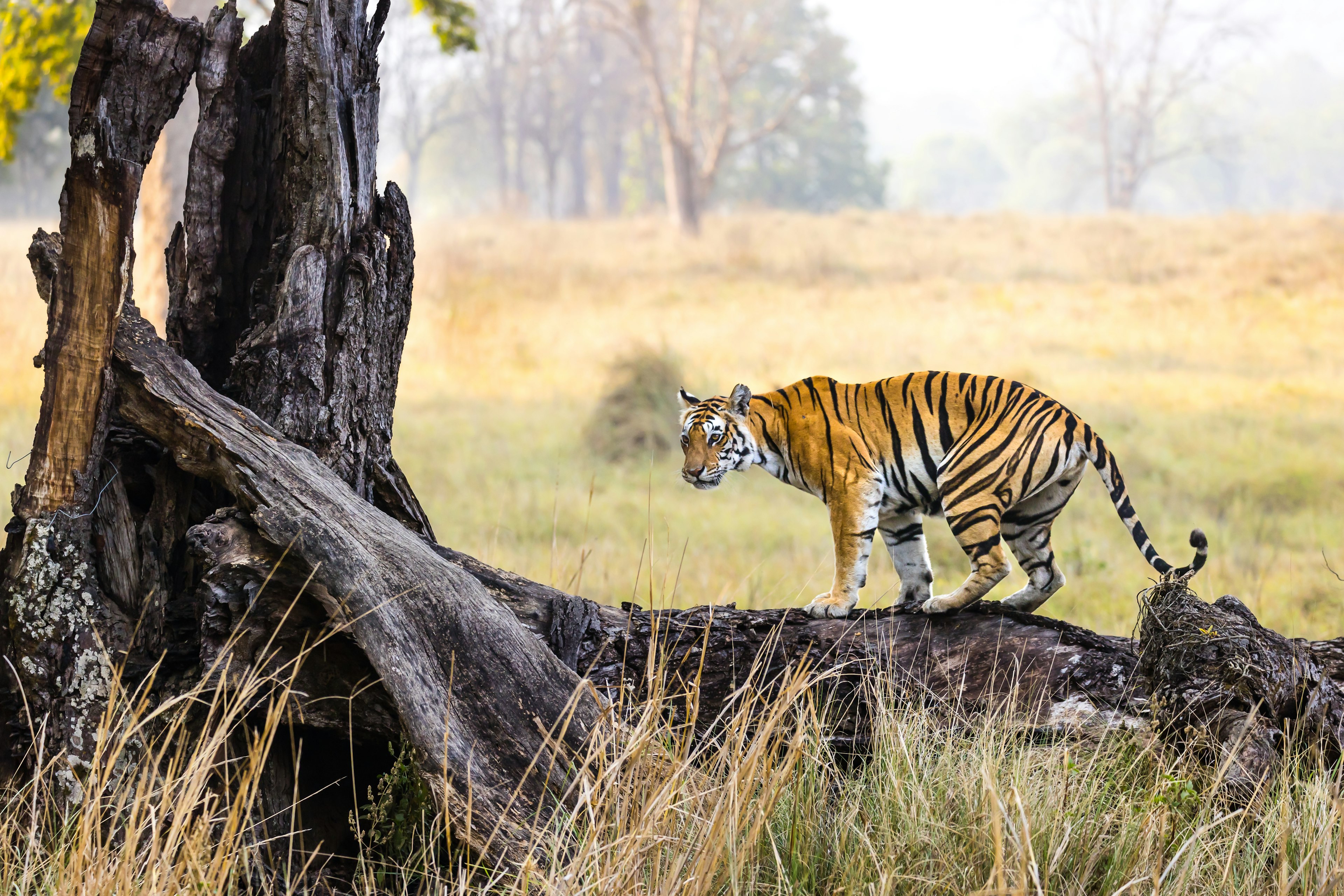
8. Madhya Pradesh
Ideal para avistamientos de tigres
Madhya Pradesh se encuentra en el corazón de India – un extenso territorio conocido como el “estado del tigre” debido a sus parques nacionales, santuarios y reservas donde abunda esta especie. Es difícil elegir entre los parques del estado, famosos por su exitoso esfuerzo de conservación. Además de los tigres, la Reserva de Tigres de Kanha es un buen lugar para observar al barasingha (ciervo de los pantanos) en peligro de extinción. La Reserva de Tigres de Bandhavgarh es conocida por los avistamientos de tigres y Pench – que muchos creen fue la inspiración para El Libro de la Selva – alberga raros leopardos negros. Las ardillas gigantes indias tienen un hogar en Satpura, mientras que Panna alberga siete especies de buitres en peligro de extinción.
Definitivamente reserva tiempo para visitar el sitio patrimonial de Khajuraho, cuyos templos arquitectónicamente ricos son famosos por sus esculturas eróticas. Otras paradas dignas incluyen el sitio de peregrinación budista de Sanchi y los abrigos rocosos de Bhimbetka, que muestran vestigios de la vida temprana en India.

9. Meghalaya
Ideal para la belleza natural
Este ‘morada de las nubes’ en el noreste de la India, a menudo pasado por alto, es un testimonio de la belleza natural del país. Meghalaya está agraciada con cascadas resonantes, colinas verdes y un vasto sistema de cuevas y lagos.
Es una región perfecta para quienes adoran la aventura, disfrutan descubriendo cocinas nuevas y emocionantes, y desean comprender la cultura Adivasi (indígena) de India. No dudes en hacer una parada en la aldea de Mawlynnong, cerca de la frontera con Bangladesh, considerada una de las aldeas más limpias de Asia.
Lo más destacado en el estado es visitar los puentes de raíces vivas creados por el pueblo Khasi, quienes entrenaron las raíces de los árboles de caucho indio para que se entrelacen, formando puentes naturales sobre ríos. Alcanzar estos puentes, especialmente el famoso puente de raíces de dos pisos cerca de Nongriat, requiere algo de ejercicio cardiovascular. Puedes encontrar más de estas bellezas alrededor de Dawki y Cherrapunji (Sohra).
Consejo de planificación: Mejor explorar Meghalaya hacia el final del monzón, cuando las lluvias están disminuyendo pero las cascadas aún están en pleno flujo. El transporte público no es ideal, así que contrata un coche y conductor para desplazarte.

10. Odisha
Ideal para templos, artes y oficios
Odisha (anteriormente Orissa) es un estado de múltiples dones. Junto con un rico patrimonio religioso, ofrece comida excelente (aunque poco conocida), artes y oficios indígenas, belleza natural, vida silvestre vibrante y una cultura tribal fascinante. La historia del budismo en India también se exhibe en más de 100 sitios sagrados y monumentos históricos.
Lo más destacado de cualquier visita son los templos del estado. El principal entre ellos es el Templo del Sol en forma de carruaje en Konark, un prodigio de la arquitectura Kalinga. La ciudad costera de Puri alberga también templos importantes, incluyendo el Templo de Jagannath, escenario de un vasto festival de carruajes conocido como Ratha Yatra en junio o julio.
Diferentes regiones son famosas por sus artes y oficios. Cuttack es conocido por su trabajo en filigrana de plata, Raghurajpur por pattachitra (pintura en tela) y Pipili por los trabajos de apliques. Los santuarios de vida silvestre aquí ofrecen diferentes tesoros: Gahirmatha es hogar de tortugas Oliváceas; Bhitarkanika alberga cocodrilos de agua salada en peligro de extinción y garzas; y Nandankanan tiene tigres blancos y negros (pseudo-melanísticos).
Consejo de planificación: Siempre hay un festival o feria ocurriendo en Odisha. El Ratha Yatra de Puri atrae a la mayor cantidad de personas, pero el Festival de Danza de Konark en febrero y el Festival de la Playa de Puri en noviembre también son populares.

11. Rann of Kachchh (Kutch), Gujarat
Most suitable for desert hues and tranquility
Located in the Thar Desert of Gujarat, this extensive region of salt flats stands as one of the globe’s largest salt deserts, perfect for admirers of photography and savoring pristine nature. The Rann of Kachchh (Kutch) is also the destination for observing creatures like migratory flamingos and the scarce Indian wild ass. These animals can be spotted at the Kutch Desert Wildlife Sanctuary and the Wild Ass Sanctuary. Learn about the Kutchhi inhabitants residing here, their embroidery customs, and delve into the archaeological zone of Dholavira. Every winter, the authorities organize the Rann Utsav festivity – a celebration of arts, folk dance, and melody.
Side Trip: A noteworthy event in the Thar Desert is the Pushkar Camel Fair in November, a grand annual camel gathering with a multi-day cultural carnival, conducted in the sacred locale of Pushkar near the city of Ajmer in Rajasthan.

12. Udaipur, Rajasthan
Optimal for some lake rejuvenation
Rajasthan delights in its appellations. Whereas Jaipur is the Pink City and Jodhpur the Blue City, Udaipur is known as the White City or the City of Lakes. It’s an apt designation for a metropolis encompassed by seven lakes.
This lively city offers an abundance of activities. Experience the cityscape from the City Palace and trek towards the Sajjan Garh Monsoon Palace, which overlooks Fateh Sagar Lake. Alternatively, embark on a boat excursion on Lake Pichola to admire the city’s floating palaces – although it is touristy, it’s highly commended. Udaipur also boasts its unique ghats, with Gangaur being the most famed.
To delve into the city’s spiritual domain, be awed by the intricate carvings that adorn the Jagdish Temple or ascend to the Karni Mata Temple via the cable car, which presides above the lakeshore. By the waterfront at Gangaur Ghat, Bagore Ki Haveli serves as a museum during the day, and transforms into an entertainment venue at night – visit early evening to witness traditional Rajasthani performances.
Heralded as a city of romance, Udaipur is a favored locale for nuptial ceremonies, and if fortunate, one might catch a glimpse of a baraat (bridegroom procession) or two while in the vicinity.
Scheduling advice: Udaipur is teeming with murals on its whitewashed structures. Dedicate some time to meander through the narrow lanes and admire the detailed and vibrant paintings and graffiti.

13. Varanasi, Uttar Pradesh
Ideal for spirituality and culinary delights on the streets
Perhaps India’s holiest locale, Varanasi—also known as Benaras—is a destination for those seeking spiritual experiences. Situated along the revered River Ganges (Ganga), its riverbank ghats host multitudes of pilgrims who convene for purification rites, funerary customs, and sacred observances. On the river’s edge, one can witness the entire cycle of existence and demise unfold.
The Ganga aarti ritual, generally performed during twilight, is an extraordinary visual extravaganza. Visitors often assemble respectfully to observe the cremation processes at Manikarnika Ghat. Traversing the city’s streets behind the ghats reveals significant edifices such as Ramnagar Fort, the celebrated Kashi Vishwanath Temple, Alamgir Mosque, and the Man Mandir Observatory. Located a brief journey from the city center, the Buddhist pilgrimage destination of Sarnath, where Buddha delivered his inaugural sermon, awaits.
Varanasi also boasts a vibrant scene of street gastronomy. Its labyrinthine passageways and marketplaces are bustling with merchants serving up kachoris (crispy stuffed pastries), chaats (tantalizing snacks), jhal muri (a mixture of puffed rice, vegetables, and spices), and aloo puri (puffed bread served with seasoned potatoes).
Advice for visiting: Two distinct items to acquire from this area are the Benarasi paan (a betel nut concoction with dried dates for chewing) and the Benarasi saree, crafted from silk native to the region and adorned with exquisite silver or gold threads.



